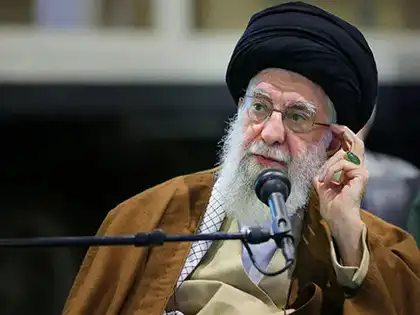
Ayatollah Khamenei
Son Not Considered Among Candidates, Says Intelligence Report
Byline: International Affairs Desk | June 2025
Amid escalating tensions with Israel and internal power dynamics, Iran’s Supreme Leader Ayatollah Ali Khamenei has reportedly selected potential successors in preparation for a leadership transition, according to intelligence sources cited in regional and Western media outlets. The 85-year-old leader, who has ruled the Islamic Republic since 1989, is said to be narrowing down a list of candidates from among Iran’s top political and religious elite, though significantly, his son Mojtaba Khamenei is reportedly not on the shortlist.
Strategic Timing Amid Assassination Concerns
The news comes at a time of heightened security concerns in Iran, especially following a series of Israeli covert operations inside Iranian territory, including high-profile assassinations of scientists and military leaders. Reports suggest that Israeli intelligence agencies may view Ayatollah Khamenei’s eventual departure as a strategic opening to destabilize the Iranian regime or disrupt its succession plan. This, in turn, appears to have influenced Tehran’s urgency in solidifying a stable transition mechanism.
Iranian sources claim that the Supreme Leader has held closed-door consultations with senior figures within the Assembly of Experts — the constitutional body responsible for choosing the next Supreme Leader — to discuss succession planning. These sessions are said to include intelligence briefings, health reports, and political assessments, as Khamenei looks to ensure continuity of Iran’s Islamic governance.
Who’s on the List?
While the names of the shortlisted candidates remain classified, experts believe the following individuals are likely under consideration:
- Ebrahim Raisi – The current President of Iran and a hardline cleric with strong ties to both the judiciary and security establishment. Raisi was once considered Khamenei’s protégé and enjoys support among key factions within the Islamic Revolutionary Guard Corps (IRGC).
- Alireza Arafi – Member of the Assembly of Experts and head of Iran’s international seminary operations in Qom. Arafi is known for his academic credentials and links to both traditional clerical institutions and hardline ideological networks.
- Sadeq Larijani – A conservative cleric and former head of Iran’s judiciary. Though his popularity has waned due to corruption allegations, Larijani remains a viable candidate due to his deep roots in the clerical elite and political establishment.
Observers point out that the next leader may not necessarily be the most powerful cleric, but someone who can maintain the Islamic Republic’s ideological coherence and resist foreign pressure, especially from the West and Israel.
Why Mojtaba Khamenei Was Reportedly Excluded
Mojtaba Khamenei, Ayatollah Khamenei’s second son, has long been rumored to be positioning himself for a leadership role. As a shadowy figure with significant influence over the IRGC and Basij militia, Mojtaba has often been accused by critics of orchestrating behind-the-scenes maneuvers in Iranian politics, particularly during election cycles and crackdowns on dissent.
However, his lack of formal religious rank and fears of dynastic succession in a system that officially rejects monarchy have reportedly disqualified him from being seriously considered. Sources inside Iran argue that appointing a family member could erode the ideological legitimacy of the regime and provoke backlash from rival clerical factions.
Israel’s Calculated Pressure
Israeli intelligence agencies, particularly Mossad, are reportedly increasing surveillance and psychological operations against Iranian leadership amid growing regional hostilities. With Iran’s nuclear program advancing and its proxies expanding influence in Lebanon, Syria, Iraq, and Yemen, Israel considers Iranian regime continuity a threat to regional stability.
In recent months, several senior Iranian officials have been targeted in suspected Israeli operations. These include drone strikes, cyberattacks, and strategic assassinations of nuclear scientists and Quds Force commanders. Israeli officials have not commented directly on succession rumors but maintain that “the Islamic Republic will face accountability for its aggression.”
Implications for Iran’s Future
Khamenei’s succession plan will not only shape Iran’s domestic politics but also its international posture. The next Supreme Leader will oversee critical decisions regarding nuclear negotiations, military strategy, and civil freedoms. With a conservative grip still tight and reformist voices largely silenced, the choice of successor could either entrench the current status quo or slightly recalibrate Iran’s trajectory.
The secrecy surrounding the process reflects both the sensitivity and the stakes involved. If the leadership transition appears orchestrated and widely accepted by elite institutions like the IRGC and the Assembly of Experts, it could ensure regime stability. But any perceived imbalance or favoritism could trigger factional disputes — or even popular unrest — at a time when Iran faces increasing socio-economic pressure.
As Khamenei ages and regional fault lines deepen, Iran’s opaque and highly centralized power structure stands at a pivotal crossroads. The next Supreme Leader, whoever he may be, will inherit not just a title but the burden of navigating a nation entrenched in ideological, economic, and geopolitical conflict.
Thanks for Reading